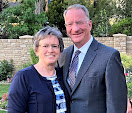Thanksgiving, November 24, 2011
Elder Darrel L. Hammon
This is our first Thanksgiving serving in the Dominican Republic, and I am so thankful for many things:
A beautiful wife who continues to look amazing.
Two gorgeous daughters, their husbands, our little sweet Emiline, and a future grandson on the way.
Beautiful weather every single day.
A mission call that allows us to serve some of God’s children on an island in the Caribbean.
The knowledge that the Book of Mormon, Another Testament of Christ, is true.
A Church that helps hundreds of thousands of people, if not millions, through its humanitarian projects throughout the world.
Good health.
Brothers and sisters
The privilege of attending the Santo Domingo Temple at least once per week.
Bon ice cream.
Fresh fruit drinks every day, made from mango, blue berries, pineapples, bananas, and vanilla yogurt
Packages that come periodically with licorice and candy corns.
Skype that allows us to talk to our family.
Senior missionary rules that allow us to do things the young elders and sisters are not able to do.
Dominicanos who are incredibly faithful to the Church.
The Internet, email, and Facebook.
Delicious food, no matter where you eat.
The ability to read and write.
A good camera that can “click and shoot” like the best of them.
Photoshop to help with the pictures that aren’t quite up to specs.
La clase de Español that helps me keep up on my Spanish.
Air conditioning.
A gate and a guard.
Being able to speak a second language.
Scriptures, journals, missionaries.
Family Home Evening, fondly called FHE.
People who know red means stop.
Sharp senses to swerve just at the right time.
A GPS that works and Elder Snow, the GPS guru.
The Caribbean Ocean, clear blue skies, and white sandy beaches.

















